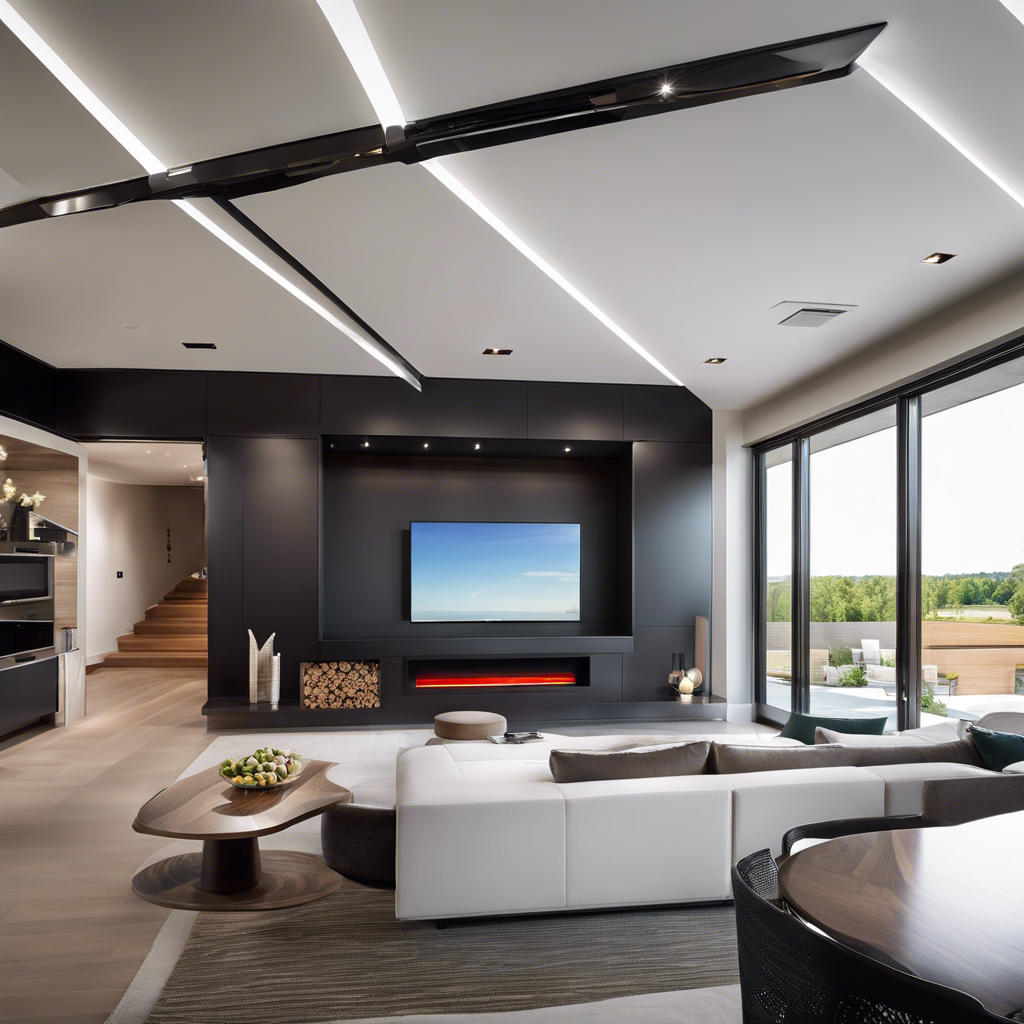Are you tired of your HVAC system consuming excessive energy and not providing the desired level of efficiency? Perhaps it’s time to consider exploring a more sustainable solution.
Energy Recovery Ventilation (ERV) systems, discreetly hidden within the walls of your Tulsa home or office, offer a promising alternative. These systems have been hailed for their ability to improve indoor air quality while efficiently recovering and reusing energy that would otherwise go to waste.
But how exactly do ERV systems work, and what benefits do they bring? Stay tuned as we uncover the answers and shed light on the factors you should consider when choosing an ERV system in Tulsa.
Key Takeaways
- Proper installation procedures are crucial for optimal performance of ERV systems in Tulsa.
- ERV systems improve indoor air quality while reducing energy consumption, resulting in lower energy bills.
- Regular maintenance, such as filter replacement and heat exchanger cleaning, ensures optimal performance and extends the system’s lifespan.
- Choosing an ERV system that meets the building’s needs while being cost-effective and easy to maintain is important for sustainable HVAC solutions in Tulsa.
Understanding Energy Recovery Ventilation (ERV) Systems
Are you interested in learning about the technical aspects of Energy Recovery Ventilation (ERV) systems?
When it comes to ERV system installation, it’s crucial to follow proper procedures to ensure optimal performance. The installation process involves several key steps, including selecting the appropriate location for the system, sizing it correctly for the space, and integrating it with the existing HVAC system. It’s essential to work with a professional HVAC technician who’s experience in ERV system installation to ensure a seamless and efficient process.
Once the ERV system is installed, regular maintenance is necessary to keep it functioning at its best. Routine maintenance tasks include cleaning or replacing filters, inspecting and cleaning the heat exchanger, checking the fans and motors for proper operation, and ensuring all connections are secure. Regular maintenance not only ensures the longevity of the system but also helps maintain its energy efficiency and indoor air quality benefits.
It’s recommended to schedule regular maintenance appointments with a qualified HVAC technician to keep your ERV system running smoothly and effectively.
Benefits of ERV Systems for HVAC Efficiency
Now that you understand the installation and maintenance procedures for Energy Recovery Ventilation (ERV) systems, let’s explore the benefits these systems offer in terms of HVAC efficiency.
ERV system installation provides a significant advantage by improving indoor air quality while reducing energy consumption. These systems ensure a constant supply of fresh, filtered air, eliminating the need to open windows and allowing for better control over temperature and humidity levels.
By recovering energy from the outgoing air, ERV systems help to reduce the load on heating and cooling equipment, resulting in lower energy bills.
Additionally, the maintenance of ERV systems is relatively straightforward, requiring regular filter replacement and periodic cleaning of the heat exchanger. Investing in regular maintenance ensures optimal performance and extends the lifespan of the system, further enhancing its efficiency.
How ERV Systems Improve Indoor Air Quality
ERV systems play a crucial role in enhancing indoor air quality by efficiently and effectively circulating fresh, filtered air throughout a building. Compared to traditional ventilation methods, ERV systems provide several advantages that contribute to improved air quality.
Traditional methods only exchange air, whereas ERV systems also recover energy from the outgoing air, reducing the energy load on HVAC systems. This energy recovery process helps maintain a consistent indoor temperature and humidity level, which is essential for optimal air quality.
Humidity control is particularly important, as high humidity can promote the growth of mold and mildew, leading to respiratory issues. ERV systems regulate humidity levels by transferring moisture between the incoming and outgoing air streams, ensuring a comfortable and healthy indoor environment.
Factors to Consider When Choosing an ERV System
When selecting an ERV system, it’s important to consider several factors to ensure optimal performance and air quality in your building.
One of the primary factors to consider is the cost of the system. You should evaluate both the initial installation cost and the long-term operating costs, including energy consumption and maintenance requirements.
It’s also essential to consider the specific maintenance requirements of the ERV system you’re considering. Some systems may require regular filter changes, while others may require more extensive maintenance, such as cleaning or servicing the heat exchangers. By understanding the maintenance requirements and associated costs, you can plan and budget accordingly.
Additionally, consider the availability of replacement parts and the reputation of the manufacturer for reliable customer support. By considering these factors, you can make an informed decision and choose an ERV system that meets your building’s needs while also being cost-effective and easy to maintain.
Implementing ERV Systems for Sustainable HVAC Solutions
To effectively implement energy recovery ventilation (ERV) systems for sustainable HVAC solutions, it’s crucial to consider various factors that optimize performance and promote energy efficiency.
When implementing ERV systems in commercial buildings, it’s important to assess the building’s ventilation needs, such as the number of occupants, the size of the space, and the desired air quality levels.
Additionally, the design and installation of the ERV system should be done by experienced professionals to ensure proper functionality.
For residential applications, it’s essential to choose an ERV system that’s suitable for the size of the house and the number of occupants.
It’s also important to consider the climate and weather conditions in the area, as this can impact the efficiency of the system.
Frequently Asked Questions
Are ERV Systems Suitable for Both Residential and Commercial HVAC Systems?
Yes, ERV systems are suitable for both residential and commercial HVAC systems. They provide efficient ventilation, recovering energy from outgoing air to precondition incoming air. This reduces energy consumption and enhances indoor air quality for occupants.
How Do ERV Systems Help in Reducing Energy Consumption and Lowering Utility Bills?
By recovering and reusing heat from outgoing air, ERV systems act as energy-saving superheroes, reducing your energy consumption and lowering utility bills. Their cost-effectiveness makes them a smart choice for efficient HVAC systems.
Can ERV Systems Be Integrated With Existing HVAC Systems or Are They Standalone Units?
You can integrate ERV systems with your existing HVAC setup for improved ventilation. However, ERV systems can also function as standalone units, offering a comprehensive solution to enhance energy efficiency and reduce utility bills.
What Maintenance Is Required for ERV Systems and How Often?
To ensure optimal performance, regular maintenance is crucial for ERV systems. Cleaning or replacing filters, inspecting and cleaning heat exchangers, and checking motor and fan operation are examples of necessary maintenance tasks. The frequency of maintenance depends on factors such as usage and environmental conditions.
Are There Any Government Incentives or Rebates Available for Installing ERV Systems in Tulsa?
There are government incentives, tax credits, and rebates available for installing ERV systems in Tulsa. These financial assistance programs can help cover the installation cost and provide energy efficiency and conservation incentives.


